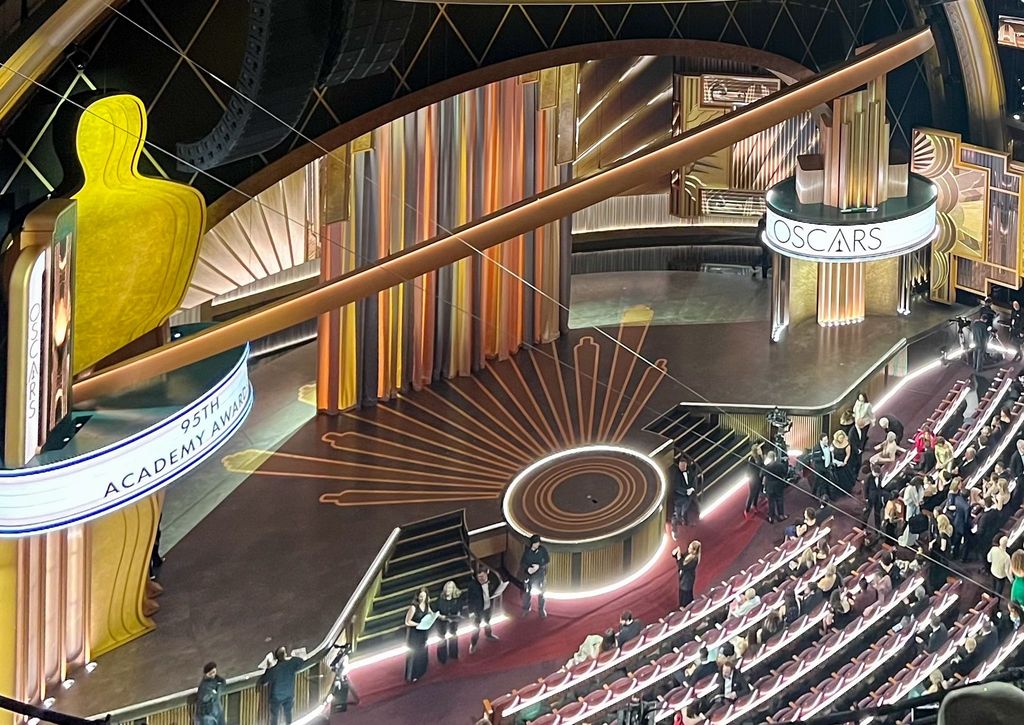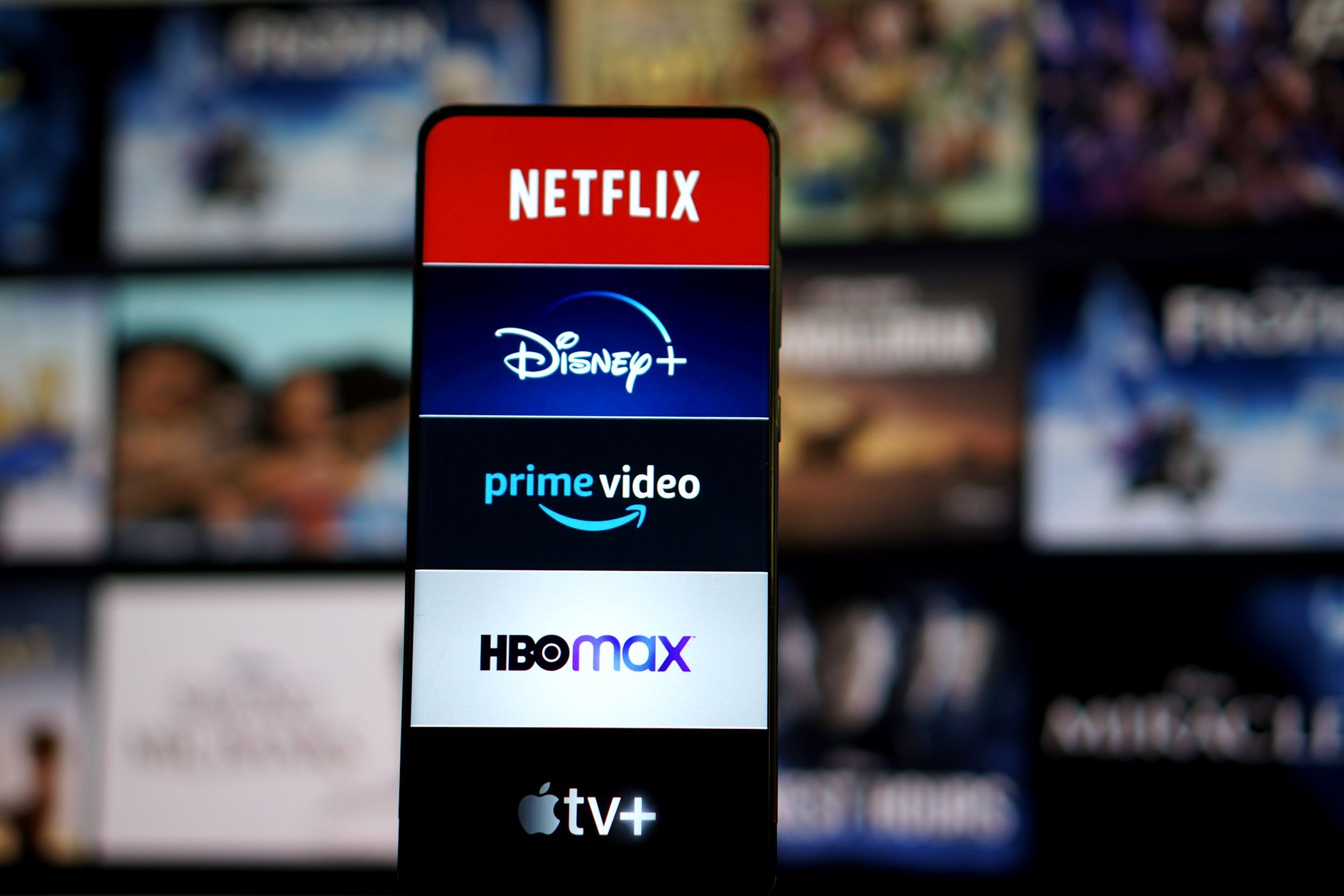
The Academy Awards, cinema’s most prestigious accolades, have always been at the heart of industry discussions, particularly regarding eligibility requirements. In an era marked by seismic shifts in film distribution and audience consumption habits, the Academy of Motion Picture Arts and Sciences faces the continuous challenge of balancing its celebrated traditions with the undeniable currents of innovation. Recent reports from Variety have shed light on the intense scrutiny and high stakes involved in these decisions, as the world of film grapples with its evolving identity.
At the core of many recent debates lies the tension between the sanctity of the theatrical experience and the disruptive, yet increasingly dominant, presence of streaming platforms. This dynamic has sparked passionate arguments among filmmakers, executives, and cinephiles alike, culminating in critical meetings where the future direction of Oscar eligibility is meticulously charted. The question of whether the Academy would move to restrict Netflix and other streaming-first productions became a focal point, drawing considerable attention from across the entertainment spectrum.
This first section delves into the immediate outcomes of these deliberations concerning the 92nd Academy Awards, examining the Academy’s decision to maintain certain foundational rules, its nuanced approach to streaming content, the influential voices that shaped these discussions, and the initial, significant steps taken towards a more inclusive global recognition through category renaming and expansion. These early adjustments set the stage for a broader understanding of how the Academy navigates the complex interplay of artistic merit, industry economics, and cultural relevance.

1. **The Status Quo Maintained: General Eligibility Rules Hold Firm**In a move that reassured many, but perhaps disappointed others who anticipated more radical change, the Academy of Motion Picture Arts and Sciences chose to uphold its long-standing general eligibility rules for the 92nd Oscars. Following a crucial governors board meeting, a vote was cast to maintain the current parameters that dictate a film’s path to Academy Awards consideration. This decision underscored the Academy’s commitment to foundational principles amidst persistent industry pressure.
Specifically, the established Rule Two remained intact, dictating that “a film must screen in a Los Angeles County commercial theater for a minimum of seven days, with at least three screenings per day.” This requirement has been a cornerstone of Oscar eligibility for decades, ensuring that nominated films have had a public theatrical exhibition in the heart of the film industry. The continuity of this rule signaled a steady hand from the Academy, emphasizing the importance of a traditional release model.
This particular outcome meant that the fundamental gateway to Oscar contention for feature-length films remained unchanged, requiring a tangible theatrical footprint, even if limited. It served as a reaffirmation of the theatrical experience as an integral component of qualifying for the film industry’s most prestigious awards, setting a clear, albeit familiar, standard for all aspiring nominees in the short term.

2. **Streaming Still Eligible: Netflix and Alternative Platforms Retain Oscar Path**Despite widespread speculation and fervent debate, the Academy explicitly clarified that films distributed by alternative release platforms, such as Netflix or Amazon Prime, would not be excluded from contention for the 92nd Academy Awards. The Board of Governors ruled that these films would “remain eligible” for Oscars consideration, provided they meet the established theatrical qualifying run in Los Angeles. This was a significant relief for streaming giants and their creative partners.
Crucially, the rule specified that films could “hit alternative release platforms like Netflix or Amazon Prime on or after the first day of a run and remain eligible.” This stipulation directly addressed the growing trend of simultaneous or near-simultaneous theatrical and digital releases, ensuring that the innovative distribution strategies employed by streaming services would not automatically disqualify their high-quality productions from the industry’s top honors. It acknowledged the evolving media landscape without entirely abandoning the theatrical component.
This decision was particularly impactful given Netflix’s recent success at the Oscars, notably with Alfonso Cuarón’s “Roma,” which garnered several nominations and wins. The Academy’s stance indicated a pragmatic willingness to integrate new models of film distribution into its awards framework, recognizing that artistic achievement transcends the specifics of a release window or platform, as long as a minimum theatrical presence is established.
3. **Academy President Bailey’s Stance: Upholding Theatrical and Future Studies**In the wake of these eligibility discussions, Academy President John Bailey issued a statement that provided insight into the organization’s thoughtful approach. He articulated the Academy’s foundational belief, stating, “‘We support the theatrical experience as integral to the art of motion pictures, and this weighed heavily in our discussions.’” This affirmed the deep-seated value placed on cinema’s traditional presentation format by the Academy’s leadership and its members.
Bailey further elaborated on the current rules, noting that they “‘currently require theatrical exhibition, and also allow for a broad selection of films to be submitted for Oscars consideration.’” This part of his statement underscored the Academy’s perception that its existing framework already struck a viable balance: mandating a theatrical component while simultaneously being inclusive enough to accommodate a diverse range of films and distribution strategies, including those leveraging streaming services.
Significantly, President Bailey also highlighted the Academy’s forward-looking perspective, indicating that the board would “‘further study the profound changes occurring in our industry.’” This commitment to ongoing evaluation acknowledges that the entertainment landscape is in constant flux. It signals that while immediate decisions were made, the dialogue and potential for future adjustments regarding distribution, technology, and audience engagement remain very much open.

4. **The Spielberg Push: Lobbying to Preserve the Cinematic Experience**Behind the scenes of these pivotal discussions, influential figures within the industry actively campaigned for changes they believed were essential for the integrity of cinema. Among the most prominent voices was that of renowned director Steven Spielberg, who “lobbied heavily for a change in rules to preserve the theatrical experience and eliminate those that did not prioritize a wide release for their films.” His advocacy brought significant weight to the debate.
Reports in March specifically detailed Spielberg’s intent to formally propose a rule alteration during the Board of Governors’ meeting. His proposed change would have sought to “restrict eligibility for films that do not have a significant theatrical run,” effectively aiming to raise the bar for streaming-first movies. This stance reflected a conviction held by many traditionalists that the communal, big-screen viewing experience is paramount to the art form and should be actively protected by the Academy.
Spielberg’s high-profile involvement underscored the deep divisions within Hollywood regarding the future of film. His position, representing a segment of the industry fiercely dedicated to the traditional cinema model, highlighted the emotional and philosophical dimensions of the debate. While his specific proposals were not adopted in their entirety for the 92nd Oscars, his influence ensured that the preservation of the theatrical experience remained a central, contentious point of discussion.

5. **The Great Debate: Cinematic Experience vs. Industry Evolution**The discussions surrounding Oscar eligibility quickly broadened into a comprehensive industry-wide debate, touching upon the very essence of filmmaking and its consumption in the 21st century. “Arguments broke out over the value of the cinematic experience, the diversifying of the film industry, the shifts in audience expectations and preferred methods of viewing, and wider questions over who gets to make movies and why.” This complex interplay of factors revealed the multifaceted nature of the challenge facing the Academy.
Many industry observers perceived the efforts to change eligibility rules, particularly those championed by figures like Steven Spielberg, as “highly reactionary to many film fans.” This sentiment was particularly potent in the context of Netflix’s critically acclaimed “Roma,” which had performed exceptionally well at the previous Oscars. The perception was that these proposed changes were a direct response to the rising influence of streaming platforms, rather than a holistic consideration of the industry’s evolution.
Ultimately, the Academy acknowledged that this was not merely a procedural matter but a fundamental discussion about the future trajectory of film. The prevailing sentiment was that this profound conversation is “not a debate that’ll go away any time soon, and nor should it.” This candid admission underscores that while specific rules may be decided, the underlying tensions and philosophical disagreements about how cinema is created, distributed, and experienced will continue to shape the industry for years to come.
Read more about: Frank Grillo’s Unfiltered Take: Are Steroids Fueling Hollywood’s Superhero Physiques?

6. **”Foreign” No More: The Evolution to Best International Feature Film**Beyond the contentious debates surrounding theatrical versus streaming releases, the Academy also enacted a significant and broadly welcomed change concerning one of its long-standing categories. For the 92nd Oscars, “The Best Foreign Language Film category has now been renamed to Best International Film,” a move widely lauded as a step towards greater inclusivity and modernity within the global filmmaking community.
This renaming was not merely cosmetic; it reflected a conscious effort to update the Academy’s terminology to better align with contemporary sensibilities. As Larry Karaszewski and Diane Weyermann, co-chairs of the International Feature Film Committee, articulated in a statement, “‘We have noted that the reference to “Foreign” is outdated within the global filmmaking community.’” The term ‘foreign’ often carries connotations of otherness, which the Academy sought to move beyond.
They further emphasized the positive intent behind the change, stating, “‘We believe that International Feature Film better represents this category, and promotes a positive and inclusive view of filmmaking, and the art of film as a universal experience.’” This thoughtful evolution aims to foster a more globally interconnected and equitable recognition of cinematic achievements from around the world, celebrating universal storytelling without the implication of geographical or cultural ‘othering’. The name change did not affect any existing category rules, submission processes, or eligibility requirements, ensuring a smooth transition for filmmakers.

7. **Expanding Recognition: A Longer Shortlist for International Films**Complementing the progressive renaming of the “Best Foreign Language Film” category, the Academy also introduced a substantive adjustment to its selection process for the 92nd Oscars: the expansion of the category’s shortlist. This practical change further underscored the Academy’s commitment to broader recognition of global cinema. The shortlist, a crucial step in narrowing down the vast field of submissions, “will be expanded from nine films to 10.”
This expansion provides a greater opportunity for more films to gain visibility and consideration in the highly competitive category. The process for arriving at this expanded shortlist involves a two-tiered approach. “Seven of those 10 will be selected by Phase 1 International Feature Film Committee, which is made up of Los Angeles-based volunteers who screen and score a minimum number of the eligible films,” ensuring a broad initial review of submissions.
The final three slots on the shortlist are determined by a specialized panel, adding a layer of curatorial expertise. These are “voted by the International Feature Film Award Executive Committee, a hand-picked group of a couple dozen foreign-film aficionados who “save” notable films that were overlooked by the general committee.” This “save” mechanism is vital for ensuring that critically acclaimed or artistically significant films, which might not score as highly in a broader screening process, still receive the recognition they deserve, fostering a more robust and diverse final selection for the international category.
Even as the Academy navigated these immediate rule considerations for the 92nd Oscars, broader external pressures and further category-specific adjustments were simultaneously unfolding, setting the stage for even more significant changes down the line. The dialogue about eligibility rules was not only internal but also attracted attention from government bodies, underscoring the high stakes involved in shaping the future of cinematic recognition. These multifaceted developments illustrate the constant recalibration required to keep the Academy Awards relevant and equitable in a rapidly changing entertainment landscape.

8. **The DOJ’s Intervention: A Warning on Antitrust Concerns**The intensity of the debate surrounding potential rule changes did not go unnoticed by regulatory bodies. It was revealed that the Academy even received a letter from the U.S. Department of Justice, a significant development that introduced a new layer of complexity to the ongoing discussions. This intervention signaled that any alterations to eligibility criteria could have far-reaching legal ramifications beyond the industry itself.
The Department of Justice specifically warned the Academy that a change to the eligibility rules, particularly those perceived to restrict competition, could be in violation of anti-trust laws. This warning implied that attempts to significantly curb the eligibility of streaming films might be viewed as an anticompetitive practice, potentially limiting consumer choice and stifling innovation within the film distribution sector. The specter of such legal challenges undoubtedly influenced the Academy’s deliberations.
While this warning from a federal agency was a critical piece of information, the Academy never issued any public comment on the report, maintaining a discreet stance. Consequently, the precise impact of the DOJ’s letter on the Academy’s decision-making process, or how likely a substantial rule change was in response to lobbying efforts like Spielberg’s, remained a matter of speculation within industry circles.

9. **Broader Adjustments for the 92nd Oscars: Animated Feature Category**Beyond the headline-grabbing discussions about streaming eligibility and international feature films, the Academy also announced a series of additional rule changes for the 92nd Oscars across several other categories. These adjustments, though perhaps less publicly contentious, represented an ongoing commitment to refining the awards process and adapting to the evolving nature of filmmaking in various specialized fields.
One notable change was made in the Animated Feature category, addressing a long-standing requirement. The Academy ruled that the category will now still be presented even if there are not at least the previously required eight eligible animated films released theatrically in a calendar year. This pragmatic shift ensures that the artistic achievements in animation are recognized consistently, regardless of fluctuating production volumes.
Furthermore, the nomination voting process for the Animated Feature category saw an important expansion. Nominations voting will now be automatically open to all active members of the Short Films and Feature Animation Branch, ensuring comprehensive participation from animation specialists. Other active voting members of the Academy who wish to participate in the nominations round must simply opt-in, broadening the base of voters for this significant award.

10. **Enhancements in Makeup and Hairstyling**The craft of Makeup and Hairstyling, often critical to a film’s visual storytelling, also received enhanced recognition and an updated selection process for the 92nd Academy Awards. These modifications aimed to provide more opportunities for films showcasing exceptional work in these specialized artistic disciplines to be celebrated by the Academy.
In a welcome change for the artists working in this intricate field, the number of films nominated in the Makeup and Hairstyling category was increased from just three to five. This expansion allows for a broader spectrum of outstanding work to be acknowledged and celebrated on Hollywood’s biggest night, reflecting the depth of talent within the industry.
Accompanying this increase in nominations, the shortlist for the category also expanded, growing from seven films to ten. This adjustment provides a wider initial pool of contenders for the final nominations. Additionally, a new technical specification was introduced, stipulating that the bake-off reels for the films, which showcase the artists’ work, shall not exceed seven minutes in total running time, streamlining the presentation and evaluation process for voters.
Read more about: Beyond the Character: 14 Actors Who Underwent Dramatic Transformations for Roles

11. **Expanded Eligibility for Short Films**Recognizing the challenges and varied distribution pathways for short-form content, the Academy implemented a crucial adjustment for its Animated and Live Action Short Film categories for the 92nd Oscars. These changes specifically addressed the theatrical qualification requirements, making it easier for deserving short films to enter the awards race.
Previously, Animated and Live Action Short Films needed a qualifying theatrical run in both New York and Los Angeles County to be eligible for submission. However, under the updated rules, these short films now have the option to qualify theatrically in either New York *or* Los Angeles County, significantly easing the logistical and financial burden on filmmakers and producers of independent shorts.
These amendments were part of a larger suite of updates that also included standard date changes and various “housekeeping” adjustments, reflecting the Academy’s continuous effort to refine its rules. It is a testament to the organization’s dynamic approach that rules are reviewed annually by individual branch and category committees, with the Awards and Events Committee then reviewing all proposed changes before presenting its recommendations to the Board of Governors for final approval, ensuring constant vigilance over the awards process.
Read more about: Mic Drop or Misfire? 15 Oscar Moments That Show How the Academy Keeps the Speeches (and Show) On Track

12. **The 97th Academy Awards: A Tougher Best Picture Road Ahead**While the immediate eligibility concerns for the 92nd Oscars were addressed with nuanced adjustments, the Academy recently announced a much more significant overhaul of the theatrical requirements for its most prestigious award: Best Picture. These sweeping changes, set to take effect for the 97th Academy Awards in 2025, signal a definitive move towards reinforcing the theatrical experience as paramount for top contenders.
The changes, announced by the Academy of Motion Picture Arts and Sciences, come after three years of adjusted release standards, largely necessitated by the global pandemic. This period saw a temporary loosening of some theatrical requirements, making the current shift a deliberate re-engagement with traditional exhibition models as the industry navigates a post-pandemic landscape.
Under the new stringent rules, Best Picture hopefuls will have to spend considerably more time in theaters to qualify. On top of the existing requirement for a one-week “qualifying run” in one of six U.S. cities—New York, Los Angeles, Chicago, Atlanta, San Francisco, or Miami—contenders will now also be mandated to play for an additional seven days in 10 of the top 50 U.S. markets. Furthermore, several other new rules regarding specific windows and durations for theatrical exhibition have been introduced, ensuring a comprehensive theatrical footprint.

13. **Industry’s Hope for Theatrical Reaffirmation**Explaining the rationale behind these significant new Best Picture rules, Academy CEO Bill Kramer and Academy President Janet Yang issued a joint statement. They articulated a clear vision, stating, “‘It is our hope that this expanded theatrical footprint will increase the visibility of films worldwide and encourage audiences to experience our art form in a theatrical setting.’” This sentiment underscores a dual aim: promoting global accessibility for films and reinforcing the value of communal viewing.
This decision is viewed as a multifaceted gesture by the Academy. It serves partly as a direct support to theaters still grappling with the economic aftermath of the pandemic, offering them a guaranteed slate of high-profile films. It is also designed to benefit audiences in markets outside of major hubs like New York and Los Angeles, who often do not get theatrical access to many Best Picture contenders. Crucially, it stands as a clear statement to deep-pocketed streaming services that, for Hollywood’s top prize, the theatrical experience remains paramount.
Academy leaders emphasized that this decision was born out of extensive conversations with industry partners, suggesting a collaborative effort to find a beneficial path forward. They expressed confidence, noting that this “evolution benefits film artists and movie lovers alike,” indicating a belief that stronger theatrical presence ultimately enhances the film industry ecosystem. This perspective was echoed by Michael O’Leary, the President and CEO of the National Association of Theater Owners (NATO), who publicly applauded the “important initiative,” affirming that “theatrical exhibition is the keystone of the industry.”

14. **Streaming Giants Adapt, Indie Films Face New Hurdles**The new theatrical requirements for Best Picture eligibility are expected to have varied impacts across the industry, with traditional studios likely facing minimal disruption. For major players like Warner Bros., Universal, and Disney, as well as acclaimed independent studios such as A24 and Neon, the entities behind recent Best Picture winners like “Everything Everywhere All At Once” and “Parasite,” these changes are anticipated to affect very little, as their release strategies typically already include substantial theatrical runs.
For streaming services, however, the adjustment might be a more nuanced, case-by-case scenario, though not necessarily an insurmountable hurdle. Companies like Amazon are proactively adapting, with plans to release 12 to 15 movies theatrically every year, as demonstrated by films like Ben Affleck’s “Air.” Similarly, Apple is committed to spending $1 billion annually on movies slated for cinemas before streaming, including Ridley Scott’s “Napoleon.” Netflix, too, has expanded its theatrical footprint, controlling two U.S. theaters—New York’s Paris Theater and Los Angeles’ American Cinematheque—and historically providing theatrical runs for its awards hopefuls. All of Netflix’s nominees since “Roma” have met the previous requirements, with its most recent Best Picture nominee, “All Quiet on the Western Front,” playing in hundreds of theaters.
Despite the adaptability of major players, the new rule may disproportionately impact the possibility of a grassroots campaign on behalf of very small, independent films. The landscape for independent theaters willing to play such films has become increasingly rare, intensifying the competition for screens in major markets. Many bigger indie stalwarts are even prioritizing major studio films, leaving fewer slots and screens available for truly independent productions, thereby potentially limiting the visibility of emerging voices.
As Dan Berger, president of the independent film company Oscilloscope, observed, “It’s important to consider that qualifying is merely a first step in a long process that involves robust and costly campaigning.” He asserted, “‘I think it’s fair to say that nearly any film that doesn’t meet these parameters never stood a chance in a best picture race anyway.’” Berger also raised a pertinent concern, adding, “‘Hopefully the result of this isn’t more robust and more costly campaigning that only serves to further divide merit based results from campaign based results.’” This highlights the ongoing tension between artistic merit and the financial demands of awards season.

15. **Unanswered Questions and the Ongoing Evolution**Despite the Academy’s clear intentions, the newly announced Best Picture eligibility requirements for the 97th Academy Awards still leave a host of unanswered questions regarding their practical implementation and broader consequences. Specifics about minimum showtimes and screen counts remain nebulous, prompting industry observers to ponder whether companies might simply rent out eight screens in densely populated, yet not historically indie-friendly, areas to merely “check the box.” This raises concerns about whether such tactics would genuinely benefit theaters, the films themselves, or audiences, or merely contribute to an even greater year-end bottleneck of releases as studios scramble to meet deadlines.
Further questions linger about how these stringent requirements will affect the eligibility of animated films and documentaries, categories that traditionally operate under different distribution models. While these films might not have to meet the new expanded theatrical footprint to qualify in their individual categories, the pursuit of a Best Picture nomination could now necessitate a significantly different and potentially more costly theatrical strategy for them.
Yet, a sense of cautious optimism prevails among some industry members who acknowledge that the Academy’s Board of Governors frequently convenes to reassess rules as the landscape continues its relentless transformation. As one top awards strategist and Academy member, speaking anonymously, articulated, “‘It’s about time that the academy made a move to recommit to theatrical. The Oscars were inching closer and closer to becoming the Emmys.’” While recognizing that the Academy “‘could have gone further,’” the strategist ultimately concluded, “‘But it’s a good faith step in the right direction.’” This sentiment underscores the ongoing, intricate dance between tradition, innovation, and industry realities.
Read more about: 10 Baffling Cases: When Famous Writers Mysteriously Vanished Mid-Story
The journey of the Academy Awards, particularly in its approach to eligibility and the evolving nature of film distribution, is clearly far from over. From the initial maintenance of theatrical runs for streaming films to the Department of Justice’s watchful eye, and now to significantly expanded theatrical mandates for Best Picture, each decision reflects a complex balancing act. The Academy continues to grapple with honoring its storied history while embracing the undeniable shifts in how films are made, consumed, and celebrated. These ongoing dialogues and rule adjustments are not merely bureaucratic exercises; they are vital reflections of an industry in constant flux, striving to define what constitutes cinematic excellence in the 21st century and beyond.




